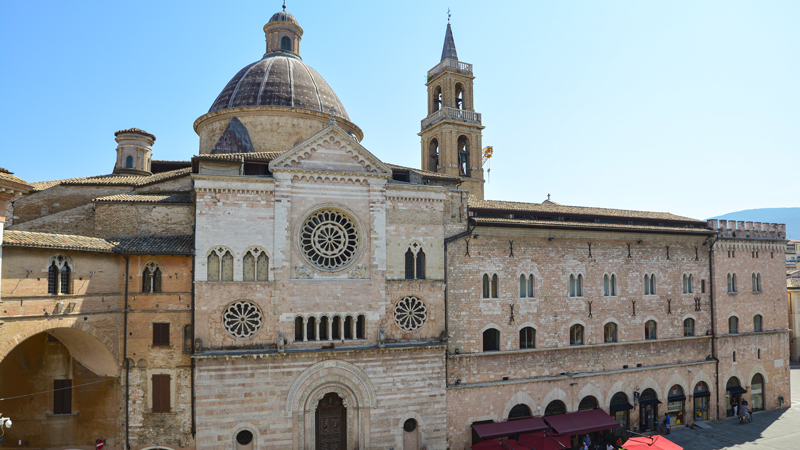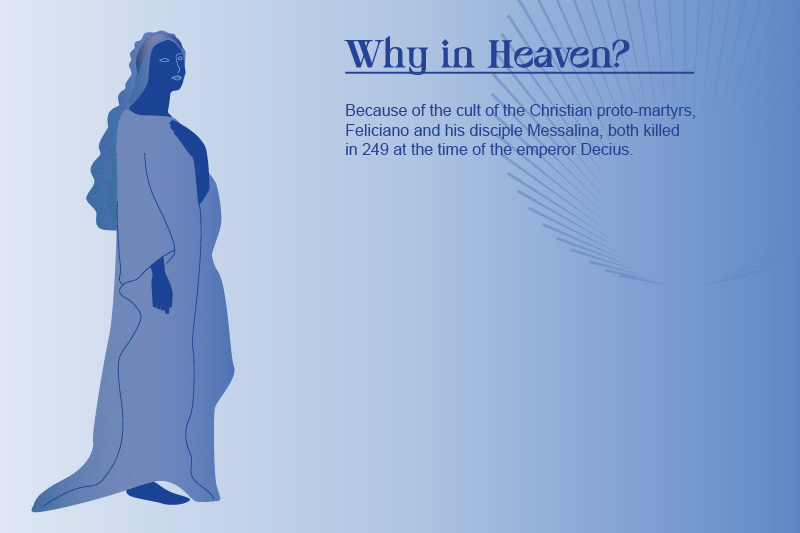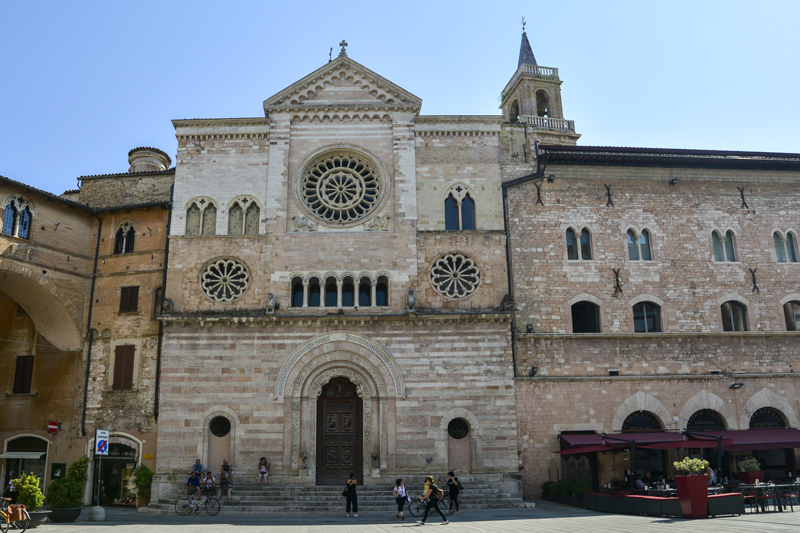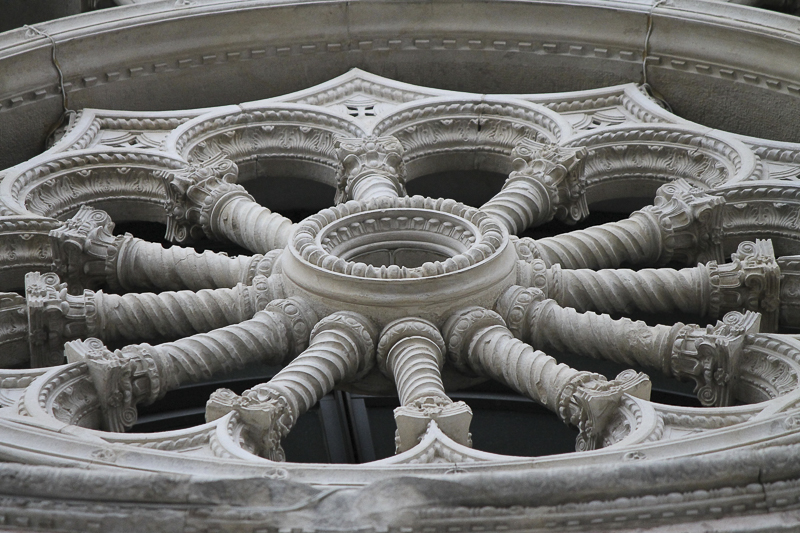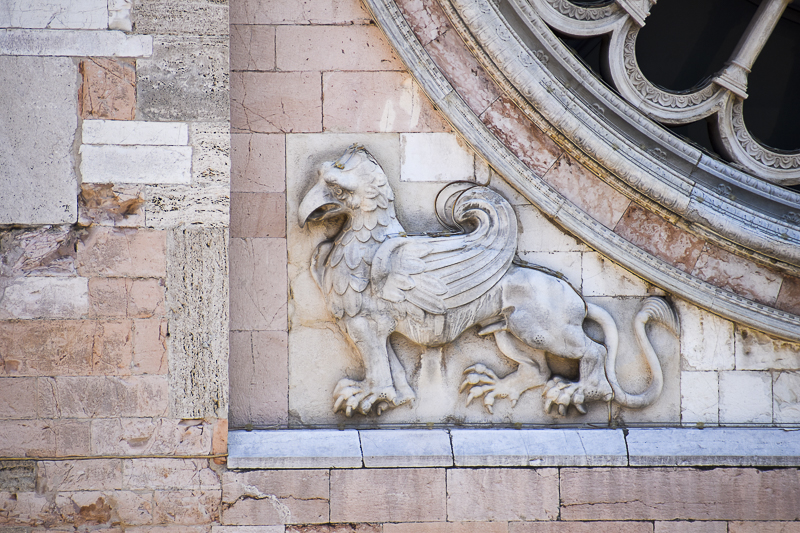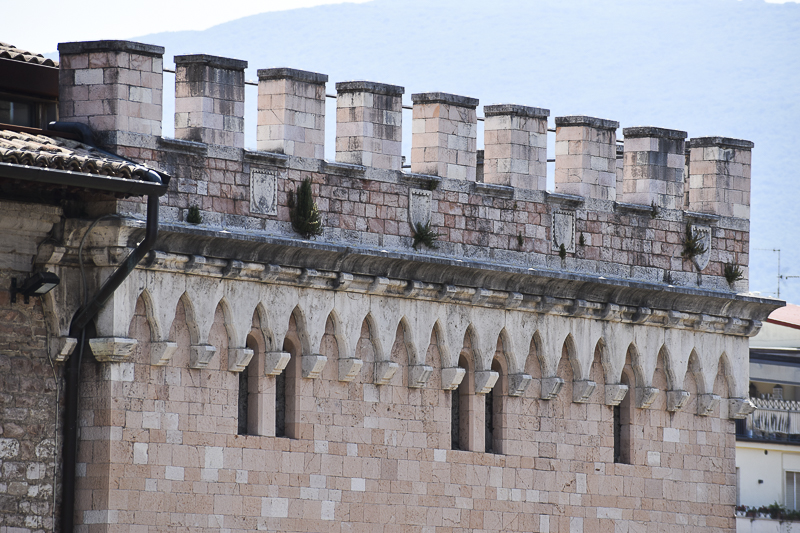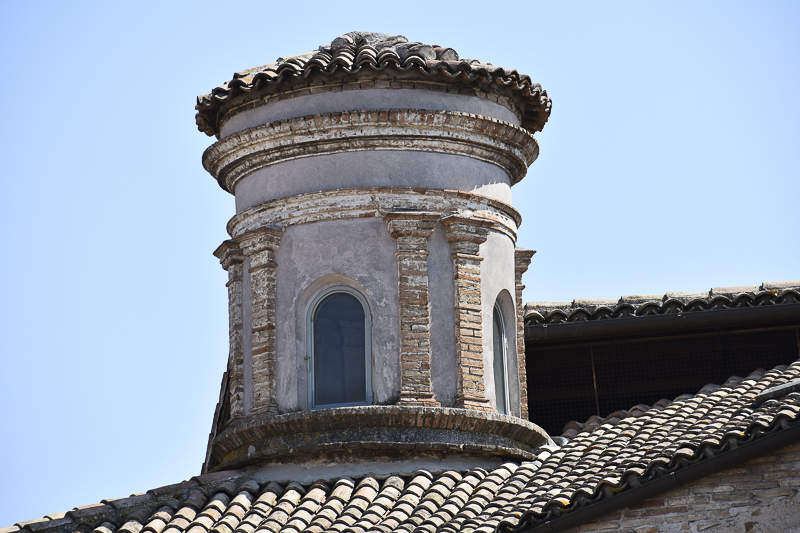The cathedral is dedicated to St. Feliciano, who was a bishop and a martyr. The main façade ideally faces Rome, that is, the centre of universal Christianity, while the smaller one overlooks the platea vetus, which is the current main square, “Piazza della Repubblica”. The church was built in the first half of the 11th century. Its current appearance is due to expansions and changes that occurred in different eras. As a result of the twentieth century restorations, the main façade is simple and hut shaped. In the second order it has a Romanesque rose window surmounted by a mosaic depicting Christ enthroned between the saints Feliciano and Messalina, made from a design by the Foligno painter Carlo Botti in 1904. The mosaic was a present from Pope Leo XIII, who is also depicted there. It has a Latin cross plan and a single nave. An element of particular interest is the canopy made in carved and gilded wood, located above the main altar. It is a scale copy of St. Peter's canopy, placed in the Vatican basilica, made by Andrea Calcioni in 1698, with some variations, though. Under the altar there is the Chapel of the Relics and in front of it there is the entrance to the crypt. On the first altar, on the right, there is the large and noteworthy canvas depicting the martyrdom and glorification of Santa Messalina, a protomartyr of Foligno, painted by Enrico Bartolomei. On the second altar there is the Holy family and saints by Giovanni Andrea Lazzarini from Pesaro. In the left transept there is the sixteenth-century Jacobilli Chapel with an elegant octagonal plan. On the sidewalls two large frescoes by Vespasiano Strada stand up, depicting the martyrdom and death of St. Feliciano.

Il progetto Divina Foligno è sviluppato nell’ambito del “programma Agenda urbana di Foligno Smart community - Comunità, Sostenibilità – Foligno 2020” intervento OT.6 INT_01 “Realizzazione della rete di attrattori culturali attraverso la realizzazione di itinerari culturali e tematici

The Divina Foligno project is promoted and financed as part of the "Urban Agenda of Foligno Smart community - Community, Sustainability - Foligno 2020 program" intervention OT.6 INT_01 "Creation of a network of cultural attractions through the creation of cultural and thematic itineraries"

Copyright © 2022 Landmark. All rights reserved.

